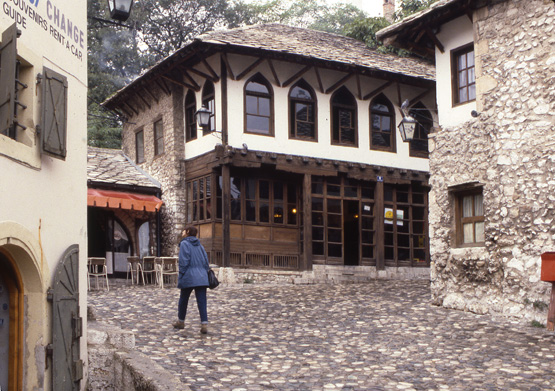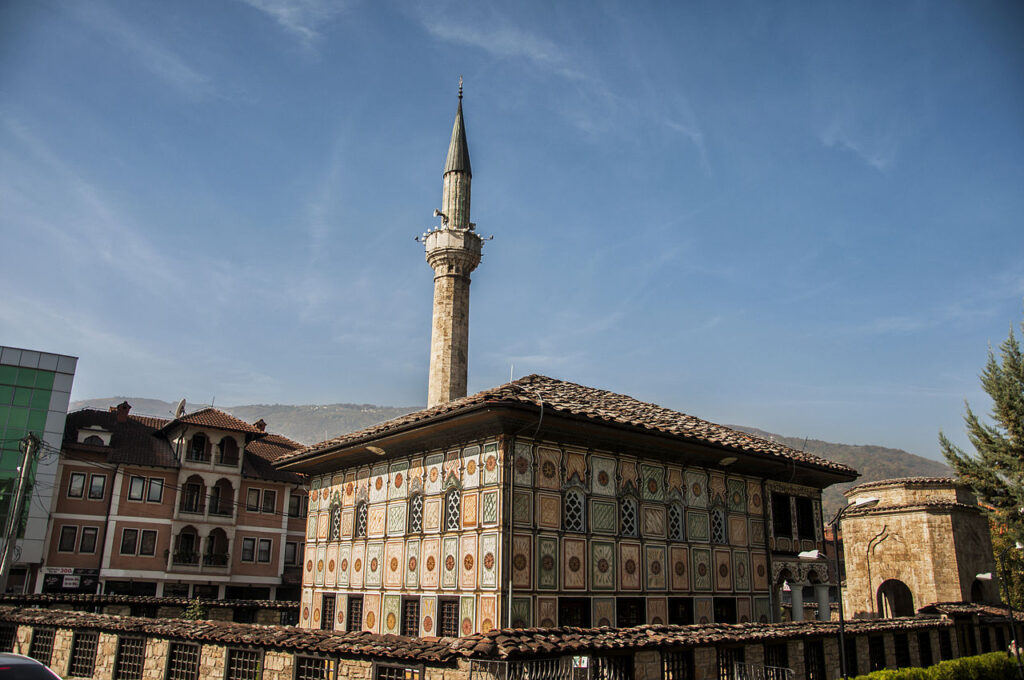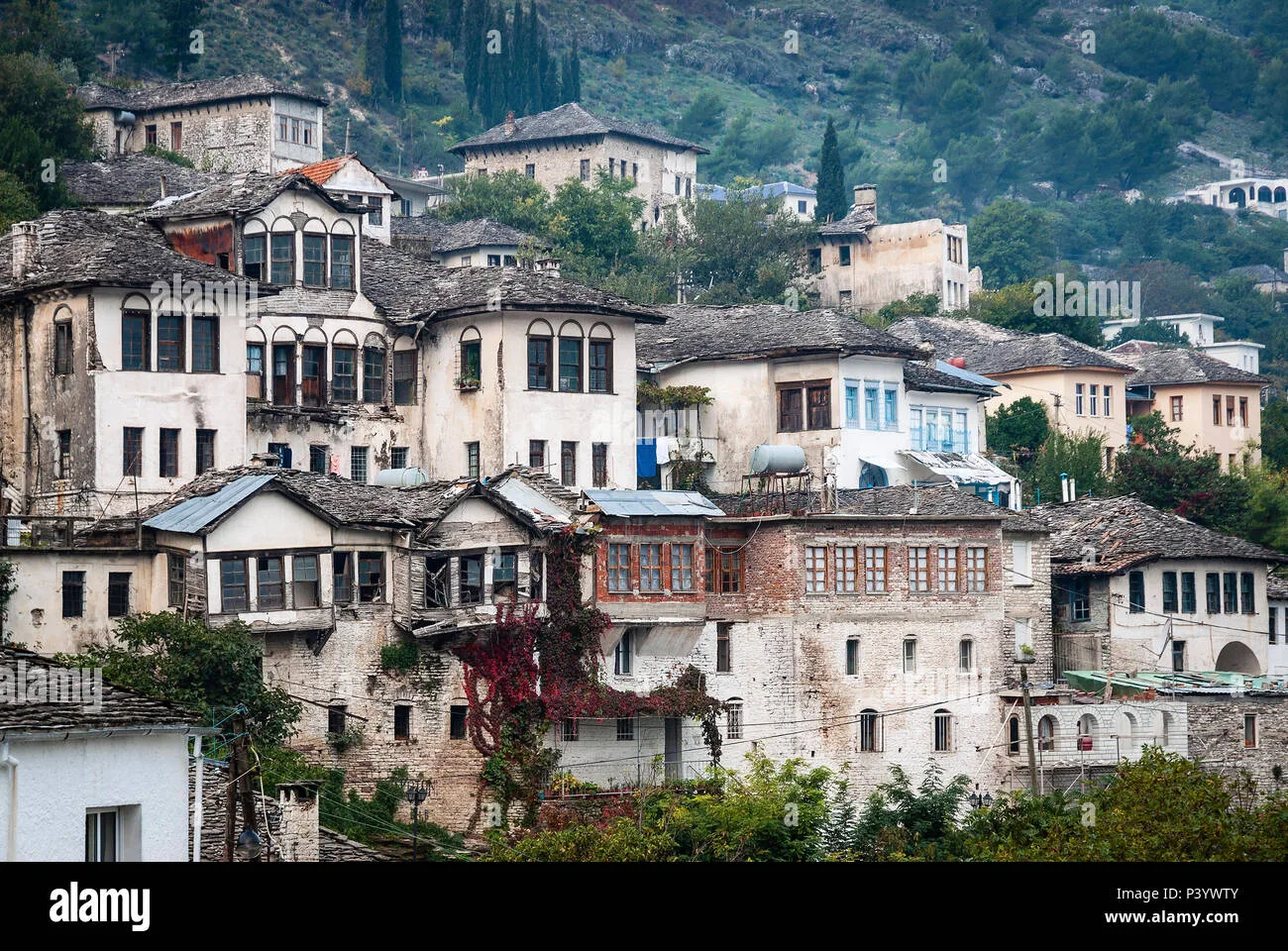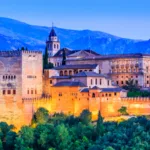Balkan architecture is rich and diverse. It reflects the region’s complex history and culture.
From ancient ruins to Ottoman influences, the Balkans offer a unique blend of styles. This blend tells stories of conquest, trade, and cultural exchange. Each building, whether a mosque, a church, or a fortress, holds a piece of history. Exploring Balkan architecture means diving into a tapestry of art and tradition.
It’s a journey through time, showing how different civilizations left their marks. Whether you’re an architecture enthusiast or a curious traveler, the structures here will captivate you. Let’s uncover the charm and significance of these architectural marvels.
Introduction To Balkan Architecture
Balkan architecture is a fascinating blend of styles and influences. It reflects the rich history and diverse cultures of the region. From ancient times to modern days, the architecture here tells many stories. Each building is a testament to the past and a window into the soul of the Balkans.
Historical Background
The history of Balkan architecture dates back to ancient civilizations. Romans and Byzantines left their mark on the landscape. Their structures still stand as reminders of their dominance. During the medieval period, the Ottoman Empire influenced the region. They introduced new styles and construction techniques. The Balkans saw a mix of Gothic, Renaissance, and Baroque styles during this era.
In the 19th century, the region experienced a wave of nationalism. This period saw the revival of traditional Balkan styles. Architects sought to create buildings that reflected their cultural identity. This blend of old and new makes Balkan architecture unique and captivating.
Cultural Influences
Balkan architecture is a melting pot of cultural influences. The region’s location at the crossroads of Europe and Asia played a role. Various empires and cultures have left their mark. The Ottoman Empire brought Islamic architectural elements. You can see this in the domes and minarets of mosques. Byzantine influences are evident in the region’s churches. They feature intricate mosaics and grand domes.
Local traditions also play a crucial role. Wood and stone are common materials in traditional Balkan homes. These homes often feature ornate carvings and colorful decorations. Modern Balkan architecture continues to blend these diverse influences. The result is a rich tapestry of styles that tell the story of the region.
Traditional Balkan Homes
Traditional Balkan homes offer a rich architectural heritage. These homes reflect the history, culture, and daily lives of the people in the Balkan region. The unique design and use of local materials make these homes both beautiful and functional.
Design And Structure
The design and structure of traditional Balkan homes are simple yet efficient. They often feature a rectangular layout with a central living area. Many homes have a porch or veranda, which serves as a transitional space between indoors and outdoors.
These homes are usually one or two stories high. The ground floor is often used for storage or as a workshop. The living areas are on the upper floors, ensuring privacy and better views.
| Feature | Description |
|---|---|
| Layout | Rectangular with central living area |
| Floors | One or two stories |
| Porch/Veranda | Common transitional space |
Materials Used
Materials used in traditional Balkan homes are typically local and natural. Stone, wood, and clay are the primary materials. These materials are abundant in the region and are well-suited to the local climate.
Stone is commonly used for the foundation and lower walls, providing strength and insulation. Wood is used for the upper structure and roof, offering flexibility and warmth. Clay is often used for plastering walls and making roof tiles.
- Stone: Foundation and lower walls
- Wood: Upper structure and roof
- Clay: Wall plastering and roof tiles
The use of these natural materials not only enhances the beauty of the homes but also ensures durability and comfort. Traditional Balkan homes are a testament to sustainable and practical building practices.
Religious Architecture
Balkan religious architecture offers a fascinating glimpse into the region’s rich history and cultural diversity. Different religions have left their mark, creating a beautiful tapestry of sacred buildings. Each structure tells a story of faith, devotion, and artistic expression.
Orthodox Churches
Orthodox churches in the Balkans are a sight to behold. They often feature domes, frescoes, and intricate iconostasis. The church interiors are filled with colorful murals and icons. These elements create a serene and spiritual atmosphere. Notable examples include the Church of Saint Sava in Belgrade and the Rila Monastery in Bulgaria.
Mosques
Mosques in the Balkans reflect the region’s Ottoman heritage. They are characterized by minarets, large domes, and ornate tile work. The Gazi Husrev-beg Mosque in Sarajevo is a prime example. It features a stunning courtyard and a beautifully decorated prayer hall. These mosques serve as important cultural and religious centers.
Synagogues
Synagogues in the Balkans are less numerous but equally significant. They showcase a blend of local and Jewish architectural styles. The Great Synagogue of Sofia stands out with its grand facade and detailed interior. It is one of the largest synagogues in Europe. These buildings are a testament to the diverse religious heritage of the Balkans.
Ottoman Influence
The Balkan region boasts a rich tapestry of architectural styles. Ottoman influence stands out as one of the most significant. Spanning over 500 years, the Ottoman Empire left an indelible mark on the architecture of the Balkans. This influence blends with local traditions, creating unique and fascinating structures.
Key Features
Key features of Ottoman architecture include large domes, minarets, and courtyards. These elements can be seen in mosques, baths, and public buildings. Ottoman buildings often have intricate tile work and calligraphy. They use geometric patterns and floral motifs. The use of arches and columns is also common. Many buildings include fountains or water features. This reflects the Ottoman emphasis on cleanliness and beauty.
Legacy And Preservation
The legacy of Ottoman architecture is evident today. Many buildings from this era still stand. They serve as reminders of the rich history and culture of the Balkans. Efforts are being made to preserve these structures. Restoration projects aim to maintain their original beauty. Preservation is important for cultural heritage and tourism. It helps future generations understand and appreciate their history.
Modern Balkan Architecture
The Balkans, a region known for its diverse cultural heritage, is also home to impressive modern architecture. This blend of traditional and contemporary styles creates a unique landscape. In this section, we explore innovative designs and sustainable practices shaping Modern Balkan Architecture.
Innovative Designs
Modern Balkan architects push boundaries with their innovative designs. They combine historical elements with new technologies. This fusion results in structures that honor the past while embracing the future.
Key features of these designs include:
- Minimalist aesthetics: Clean lines and open spaces.
- Use of glass and steel: Creating transparency and strength.
- Integration with nature: Buildings that blend with the landscape.
Let’s look at some examples:
| Building | Location | Notable Feature |
|---|---|---|
| Belgrade Waterfront | Serbia | Mixed-use urban development |
| Skopje Central Square | North Macedonia | Modern public spaces |
| Museum of Contemporary Art | Rijeka, Croatia | Futuristic design |
Sustainable Practices
Balkan architects are also embracing sustainable practices. They focus on eco-friendly materials and energy efficiency. This approach not only reduces environmental impact but also enhances living quality.
Some sustainable practices include:
- Using recycled materials.
- Incorporating solar panels.
- Implementing green roofs.
- Designing for natural ventilation.
These practices are evident in various projects:
- Green Building Sarajevo: Uses solar panels and green roofs.
- Zagreb Eco Apartments: Built with recycled materials.
- Podgorica Office Complex: Features natural ventilation systems.
Modern Balkan Architecture stands out for its innovation and sustainability. It reflects a region that respects its heritage while moving towards a greener future.

Urban Planning
Balkan architecture showcases a unique blend of styles. This diversity reflects the region’s rich history. Urban planning plays a crucial role in shaping these cities. Let’s explore the aspects of urban planning that define Balkan architecture.
City Layouts
Balkan cities often have intricate layouts. Narrow, winding streets are common. Many cities developed organically over time. This results in a maze-like structure. These layouts reflect historical growth patterns. They promote a sense of community. People live close to one another. This fosters strong neighborhood bonds.
Public Spaces
Public spaces are essential in Balkan cities. Squares are central gathering points. They host markets, festivals, and social events. Parks provide green spaces for relaxation. They offer a retreat from urban life. Many public spaces have historical significance. Monuments and statues often honor local heroes. These spaces connect people to their heritage.
Architectural Landmarks
The Balkans is a region rich in history and culture. The architecture here reflects a unique blend of influences. From Ottoman to Byzantine, the landmarks in this region stand as a testament to its diverse past. Explore these architectural marvels to understand the essence of Balkan heritage.
Famous Buildings
Many famous buildings in the Balkans showcase a mix of styles. They are a blend of traditional and modern designs.
- St. Sava Temple in Belgrade, Serbia is one of the largest Orthodox churches in the world. It features beautiful mosaics and a grand dome.
- Mosque of Gazi Husrev-beg in Sarajevo, Bosnia and Herzegovina is an excellent example of Ottoman architecture. It has intricate decorations and a serene courtyard.
- Rila Monastery in Bulgaria is a UNESCO World Heritage Site. It is known for its colorful frescoes and stunning mountain backdrop.
Tourist Attractions
Balkan architectural landmarks are major tourist attractions. They draw visitors from all over the world.
- Dubrovnik Old Town in Croatia is famed for its medieval walls and baroque buildings. It offers breathtaking views of the Adriatic Sea.
- Mostar Bridge in Bosnia and Herzegovina is a symbol of reconciliation. Its arch design and surrounding historic area are a must-see.
- Church of Saint Clement and Panteleimon in North Macedonia is an important Byzantine site. It boasts ancient mosaics and a rich history.
These landmarks are not just buildings. They are stories carved in stone and wood. Visiting them offers a glimpse into the past and the vibrant culture of the Balkans.

Preservation And Restoration
The beauty of Balkan architecture lies in its rich history and diverse influences. Preserving these structures is essential. It allows future generations to appreciate their cultural significance. Restoration projects focus on maintaining the original charm while ensuring safety and longevity.
Challenges Faced
Preserving Balkan architecture comes with many challenges. One major obstacle is the lack of funding. Many historic buildings require extensive work, which can be costly. Moreover, natural disasters like earthquakes can cause significant damage.
Another challenge is the shortage of skilled workers. Restoration requires experts who understand traditional building methods. Modernization pressures also pose a risk. Balancing new developments with preservation efforts is crucial.
Successful Projects
Despite these challenges, some restoration projects stand out. The restoration of the Mostar Bridge in Bosnia and Herzegovina is a notable example. Destroyed during the war, it was rebuilt using traditional techniques.
Another success story is the Rila Monastery in Bulgaria. This UNESCO World Heritage site underwent extensive restoration. It preserved its stunning frescoes and architectural integrity.
| Project | Location | Outcome |
|---|---|---|
| Mostar Bridge | Bosnia and Herzegovina | Rebuilt using traditional methods |
| Rila Monastery | Bulgaria | Preserved frescoes and architecture |
These projects highlight the importance of preserving Balkan architecture. They showcase how traditional methods and modern techniques can coexist. The result is a blend of past and present, creating a lasting legacy.

Frequently Asked Questions
Who Is The Balkan Architect?
The Balkan architect is a professional specializing in architectural designs and constructions in the Balkan region.
What Kind Of Architecture Is In Croatia?
Croatia boasts diverse architecture, from Roman ruins in Split to medieval walls in Dubrovnik. Gothic, Renaissance, and Baroque styles are prevalent.
What Is The Meaning Of Saracenic Architecture?
Saracenic architecture is a style that blends Islamic, Persian, Byzantine, and Indian elements. It features domes, arches, and intricate decorations.
What Country Is Most Famous For Architecture?
Italy is most famous for its architecture. The country boasts iconic structures like the Colosseum, Leaning Tower of Pisa, and Florence Cathedral.
Conclusion
Balkan architecture offers a rich tapestry of styles and history. Visitors can see influences from Byzantine to Ottoman eras. Each building tells a unique story. Exploring these structures provides insight into the region’s past. The beauty of Balkan architecture lies in its diversity.
Travelers will find something to admire at every turn. The blend of cultures makes the architecture truly special. Take time to appreciate the intricate designs and craftsmanship. A visit to the Balkans is incomplete without experiencing its architectural marvels. Discover the charm and history that these buildings hold.



